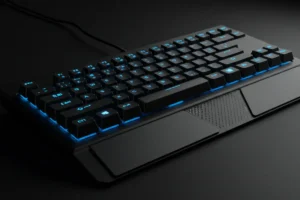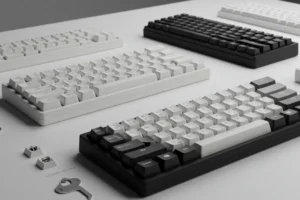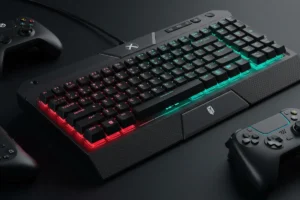So, how do you understand what makes a keyboard really good for gaming?
Some are built like tanks for intense FPS games, others are optimized for lightning-fast key presses in MOBAs or rhythm titles.
The truth is: a good gaming keyboard can totally change the way you play. And not just in terms of performance—I’m talking about comfort, customization, responsiveness, and that overall feel that makes every match feel like a championship round.
I’ve spent years testing, comparing, and just straight-up geeking out over keyboards—and today, I want to help you figure out exactly what makes a keyboard “good” for gaming.
We’ll explore the five key factors that I personally look for, and trust me, by the end of this article, you’ll never look at your setup the same way again.
Also, don’t forget to check out other awesome posts at Keyboards Technology, like How to Optimize Your Keyboard for Competitive Gaming or the insightful Gaming Keyboards vs Productivity Keyboards: What’s the Difference?. You’ll find a bunch of content that pairs perfectly with what we’re covering today!
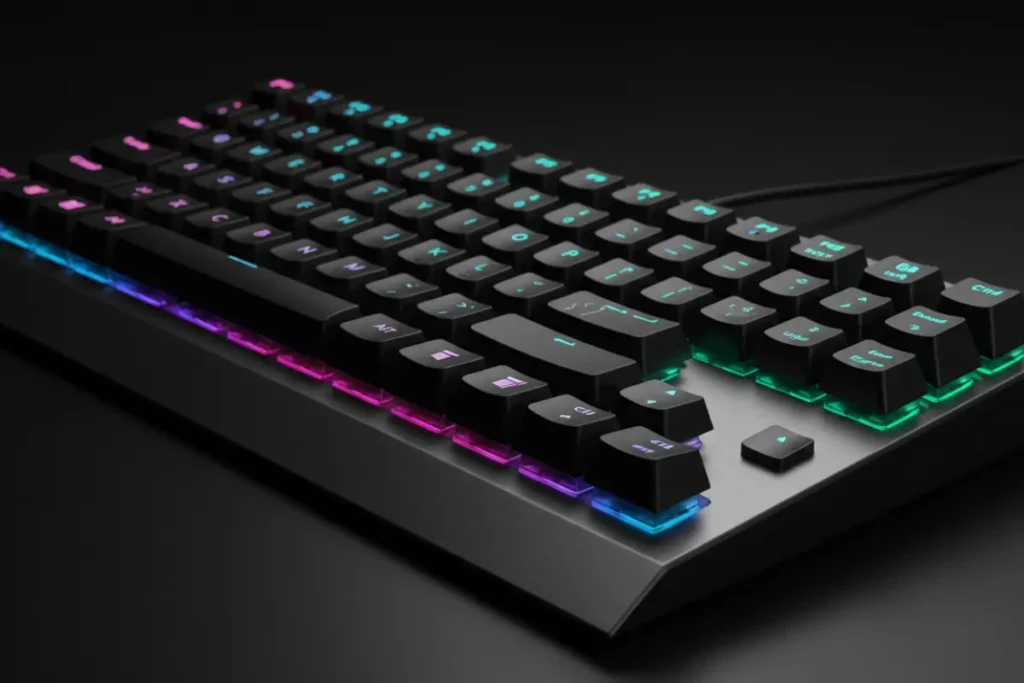
1. Switch Type and Responsiveness
When it comes to gaming, the type of switch under your keycaps is one of the most crucial factors. I’m not exaggerating when I say that the difference between a win and a loss can come down to milliseconds.
Mechanical switches—especially linear ones like Cherry MX Reds or Gateron Yellows—are loved by pros for their smooth keystrokes and fast actuation.
From my own experience, I find tactile switches helpful for games where precision matters (like strategy or RPGs), while linear switches are absolutely clutch in fast-paced shooters.
And don’t even get me started on optical switches—those are lightning-fast! Want to learn more about how switches work? Check out The Science Behind Key Switches on my blog.
Here’s what makes switch responsiveness matter:
Key things to look for in a switch:
- Actuation point: How soon the key registers after being pressed.
- Travel distance: The depth of key press before bottoming out.
- Tactility: Whether the key gives you a noticeable bump.
- Speed rating: Especially for optical switches.
And hey, if you’re curious about adjustable switches, take a look at The Best Keyboards with Adjustable Actuation Points.
2. Input Lag and Polling Rate
I cannot stress this enough: input lag is the enemy of every gamer. It doesn’t matter if you’re a casual player or someone aiming to go pro—delays in key registration can mess everything up. This is where the polling rate and latency come into play.
A good gaming keyboard should have a polling rate of at least 1000Hz, meaning it updates the computer about its key state 1000 times per second. Most high-end gaming keyboards will go above and beyond this.
Personally, I won’t use a keyboard with less than that if I’m jumping into competitive matches.
What helps reduce input lag?
- Wired connections (they’re always faster).
- High polling rates (1000Hz+).
- Fast processors inside the keyboard (yes, that’s a thing!).
- Firmware optimization.
To explore this deeper, head over to my article How to Reduce Input Lag in Wireless Keyboards — especially helpful if you love a clean wireless setup.
For external context, Wikipedia has a great primer on polling rate if you want to nerd out on the tech side (but don’t worry, I’ll keep things simple here).
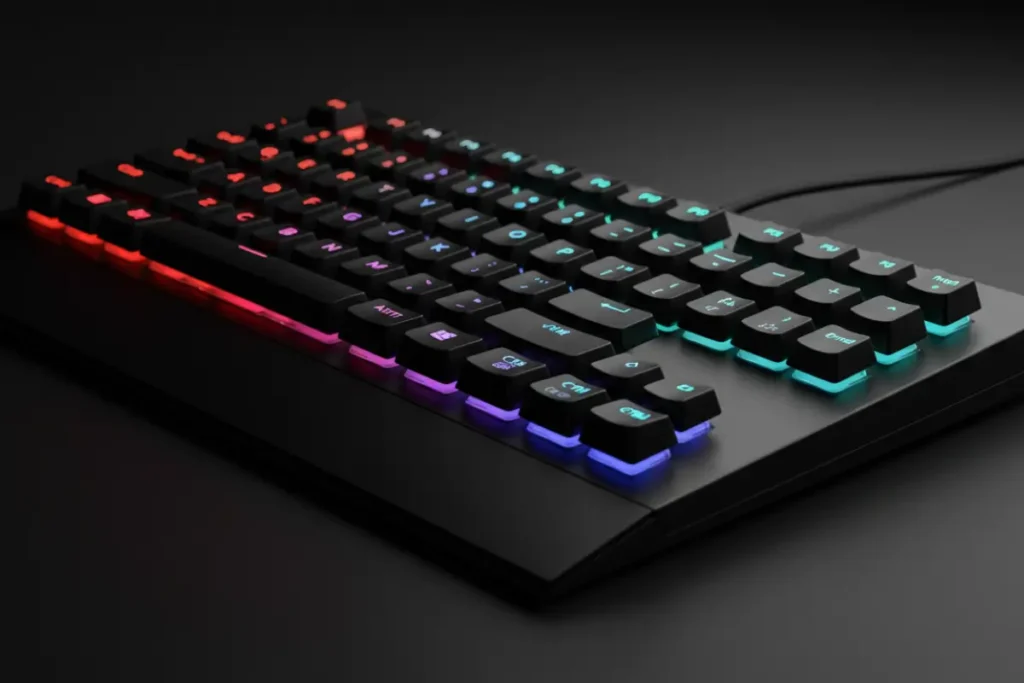
3. Build Quality and Durability
Now let’s talk durability. No one wants to shell out money on a keyboard that feels like it’s gonna crack if you get too excited after a win. (I’ve broken a few spacebars in my time.) So trust me: build quality matters.
Gaming keyboards should be built to last. Whether it’s aluminum top plates, PBT keycaps, or reinforced switches, every little bit helps when it comes to long-term use.
And honestly, a keyboard that feels premium just makes you want to game more. That’s facts.
Features that improve durability:
- Double-shot keycaps that won’t fade.
- Metal or high-density plastic chassis.
- Water-resistant designs.
- Replaceable parts (hot-swappable switches FTW!).
Want to know which ones I trust the most? Go check out The Most Durable Mechanical Keyboards in 2025.
4. Customization and Macro Support
I love tweaking my keyboard. It’s one of the best things about being in the keyboard world! 🎨 For gaming, macro support and customizable layouts are game-changers.
Games like MMOs and MOBAs benefit hugely from having extra keys that do exactly what you want, when you want.
Custom software also helps you bind specific keys for certain combos, remap layouts, and even adjust lighting. RGB isn’t just for show, either—it can help you group abilities or movements by color.
Top customization features:
- Dedicated macro keys.
- RGB lighting with per-key customization.
- Hot-swappable PCBs for switch changes.
- Key remapping software.
Curious why some keyboards have those weird extra keys? I break that down in Why Do Some Keyboards Have Extra Keys?.
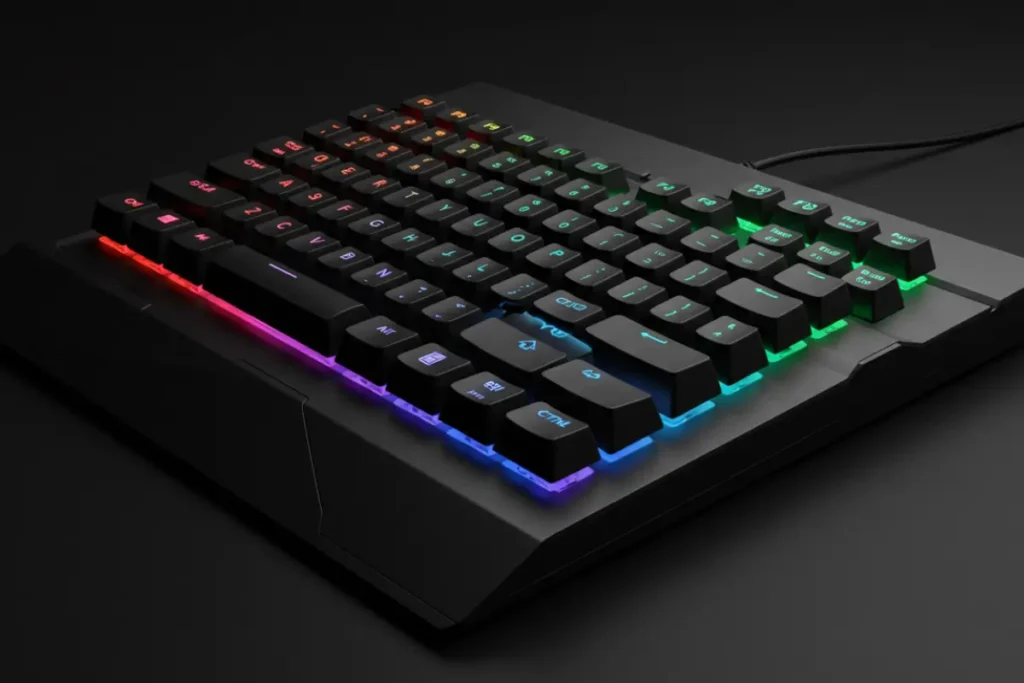
5. Ergonomics and Comfort
Gaming sessions can last for hours, and if your keyboard is uncomfortable, you will feel it. Trust me, I’ve been there. Aching wrists, cramped fingers, and misaligned hands? No thanks.
This is why ergonomic design is absolutely essential in any gaming keyboard worth its salt.
Ergonomic keyboards may have wrist rests, angled designs, or split layouts to improve your posture and prevent fatigue. Even if it doesn’t look fancy, the difference is night and day.
Comfort-enhancing features:
- Wrist rest (removable or built-in).
- Key height variation.
- Adjustable tilt feet.
- Compact layouts that reduce reach.
I covered this in more detail in How Ergonomic Keyboards Can Prevent Wrist Pain. Definitely worth the read!
See More
- What Makes a Keyboard “Good” for Gaming? 5 Key Factors
- Wireless Gaming Keyboard for Xbox, PS5 & PC: One Setup for All
- Is Razer Overpriced? A Brutally Honest Review
Final Thoughts: What I Personally Recommend
To wrap it all up, a good gaming keyboard combines fast switches, low input lag, strong build quality, smart customization, and solid ergonomics.
It might sound like a lot, but once you start looking for these traits, your whole gaming experience will evolve. Personally? I can’t go back to non-mechanical keyboards. It’s just not the same.
Want more deep dives? Visit Keyboards Technology and start exploring articles like Gaming Keyboards Ranked from Budget to Pro-Level, or if you want something different, check The Psychology of Keyboard Preferences.
If you liked this article, don’t forget to comment below what kind of gaming keyboard you’re using right now! 🧠💬 I want to hear all about your setup, preferences, and even your weirdest keyboard mods.
And please, share this article with your gaming buddies—especially that friend who still uses a rubber dome keyboard from 2012.
🎮 Join Our Discord Community!
Are you passionate about keyboards, gaming, and tech? Come hang out with fellow enthusiasts, ask questions, share your setup, and stay updated with our latest content!
👉 Join Now